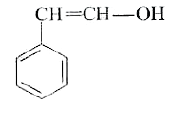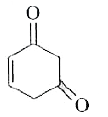Haplo - diplontic condition is exhibited by
Most algae
Bryophytes
Angiosperms
Gymnosperms
The correct Answer is:B
To answer the question regarding which group exhibits the haplo-diplontic condition, we can follow these steps:
1. Understand the Terms:
- Haplo-diplontic condition refers to a life cycle that alternates between two generations: a haploid gametophyte (which produces gametes) and a diploid sporophyte (which produces spores).
2. Identify the Groups:
- The options given are:
- Most algae
- Bryophytes
- Angiosperms
- Gymnosperms
3. Analyze Each Group:
- Most Algae: Generally exhibit a haplontic life cycle, where the dominant stage is haploid. This means they do not fit the haplo-diplontic condition.
- Bryophytes: These are non-vascular plants (like mosses) that exhibit a clear alternation of generations, with a dominant gametophyte stage and a sporophyte that is dependent on the gametophyte. This fits the haplo-diplontic condition.
- Angiosperms: These are flowering plants that primarily exhibit a diplontic life cycle, where the diploid sporophyte is the dominant phase.
- Gymnosperms: Similar to angiosperms, gymnosperms also exhibit a diplontic life cycle, with the sporophyte being the dominant phase.
4. Conclusion:
- Based on the analysis, the group that exhibits the haplo-diplontic condition is Bryophytes.
Final Answer:
Bryophytes
---
- Haplo-diplontic condition refers to a life cycle that alternates between two generations: a haploid gametophyte (which produces gametes) and a diploid sporophyte (which produces spores).
2. Identify the Groups:
- The options given are:
- Most algae
- Bryophytes
- Angiosperms
- Gymnosperms
- Most Algae: Generally exhibit a haplontic life cycle, where the dominant stage is haploid. This means they do not fit the haplo-diplontic condition.
- Bryophytes: These are non-vascular plants (like mosses) that exhibit a clear alternation of generations, with a dominant gametophyte stage and a sporophyte that is dependent on the gametophyte. This fits the haplo-diplontic condition.
- Angiosperms: These are flowering plants that primarily exhibit a diplontic life cycle, where the diploid sporophyte is the dominant phase.
- Gymnosperms: Similar to angiosperms, gymnosperms also exhibit a diplontic life cycle, with the sporophyte being the dominant phase.
- Based on the analysis, the group that exhibits the haplo-diplontic condition is Bryophytes.
Bryophytes
Topper's Solved these Questions
- PLANT KINGDOM BOOK - AAKASH INSTITUTE ENGLISHCHAPTER - PLANT KINGDOM EXERCISE - ASSIGNMENT SECTION -B (Objective Type Questions)
35 Videos
- PLANT KINGDOM BOOK - AAKASH INSTITUTE ENGLISHCHAPTER - PLANT KINGDOM EXERCISE - ASSIGNMENT SECTION -C (Previous Years Questions)
96 Videos
- PLANT KINGDOM BOOK - AAKASH INSTITUTE ENGLISHCHAPTER - PLANT KINGDOM EXERCISE - EXERCISE
50 Videos
- PLANT GROWTH AND DEVELOPMENTBOOK - AAKASH INSTITUTE ENGLISHCHAPTER - PLANT GROWTH AND DEVELOPMENTEXERCISE - ASSIGNMENT (SECTION -D)
10 Videos
- PRINCIPLES OF INHERITANCE AND VARIATIONBOOK - AAKASH INSTITUTE ENGLISHCHAPTER - PRINCIPLES OF INHERITANCE AND VARIATIONEXERCISE - Assignment (SECTION-D) Assertion-Reason Type Questions
20 Videos
Similar Questions
Knowledge Check
Tautomerism is exhibited by :
A B
B C
C D
D
